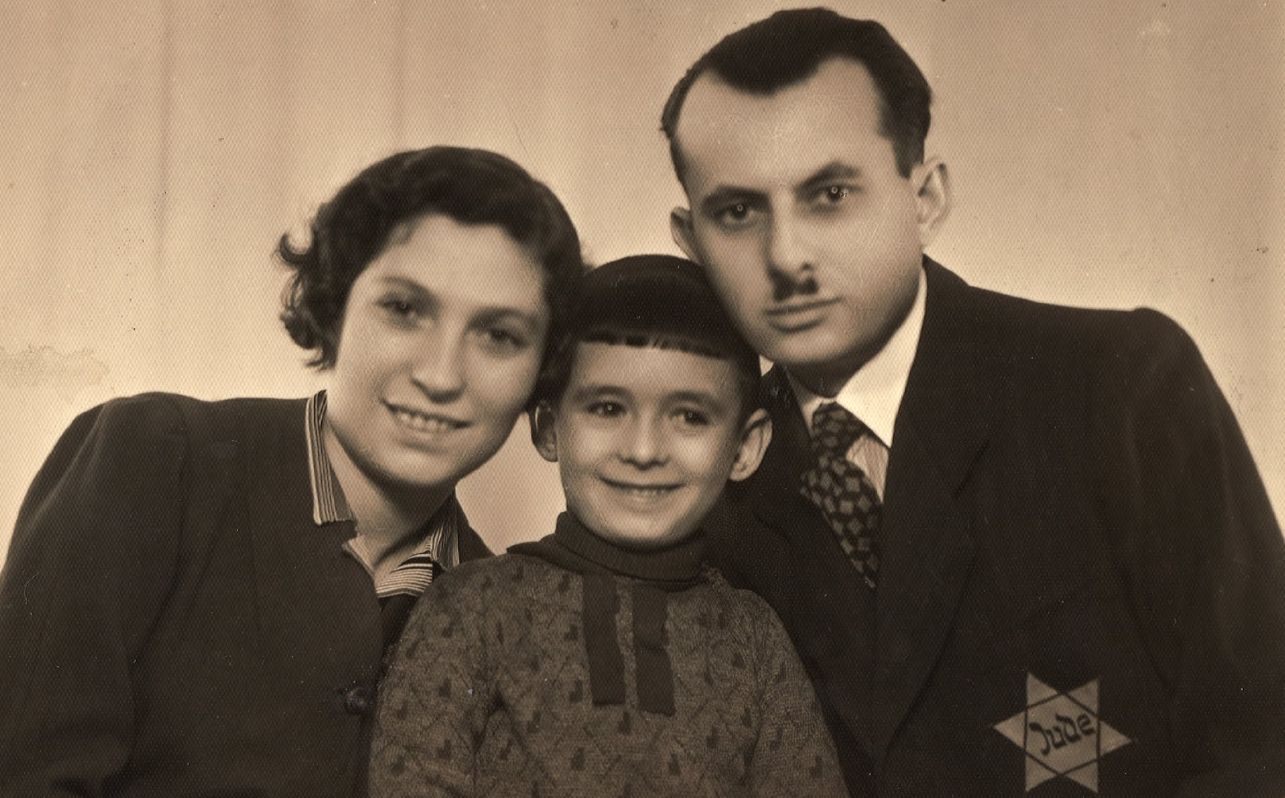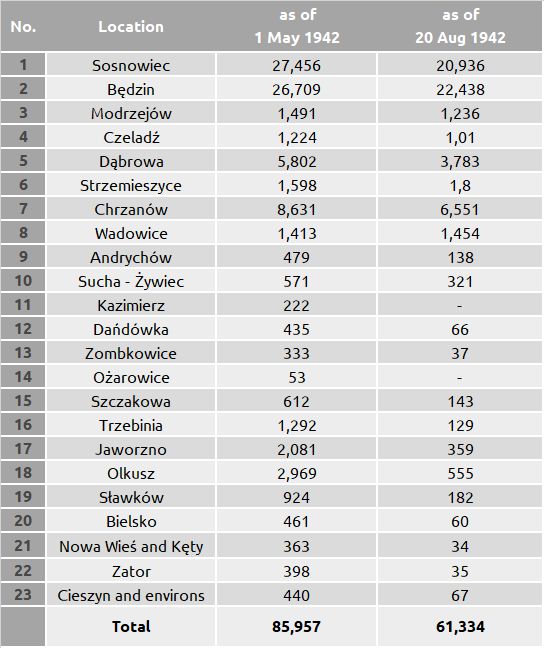Early in 1942, the process of concentrating Jews in the ghettos on the Polish territory occupied by Germany was in fact over. There were two major clusters of Jews in its western part, incorporated directly into the Reich. In Greater Poland (Warthegau) this was Litzmannstadt Ghetto, and in Upper Silesia (Provinz Oberschlesien) these were a number of smaller and larger ghettos, most of which were scattered in the central section of Zagłębie Dąbrowskie Basin (Sosnowiec, Czeladź, Będzin, Dąbrowa Górnicza). At this time, the German administration embarked on their gradual liquidation, yet retaining a large contingent of the Jews in the original ghettos which served to supplement the numbers of those working in the numerous forced labour camps in the area. To this end, the first extermination centre in Greater Poland was opened in Chełmno nad Nerem (Kulmhof) in December 1941. It had Jews considered “unproductive”, and posing a burden on the German system of provisioning, brought from all over the Warthegau region.
Initially, there was no such camp in Upper Silesia. Nevertheless, the German authorities in the local area, especially the civil servants in the Gestapo headquarters in Katowice and the Sosnowiec headquarters of Schmelt, already knew that Jews could be sent for extermination to Auschwitz, which had both gas chambers and methods for mass cremation (or burial) of corpses at its disposal. Talks concerning the matter must have been conducted with Commandant Höss as early as in the spring of 1942. It is also known that lists of those to be deported began to be drafted in the ghettos late in April. The resettlement campaign proper began on 12 May; by the end of August around 30,000 Jews were transported from the ghettos of the Zagłębie Region to Auschwitz.



